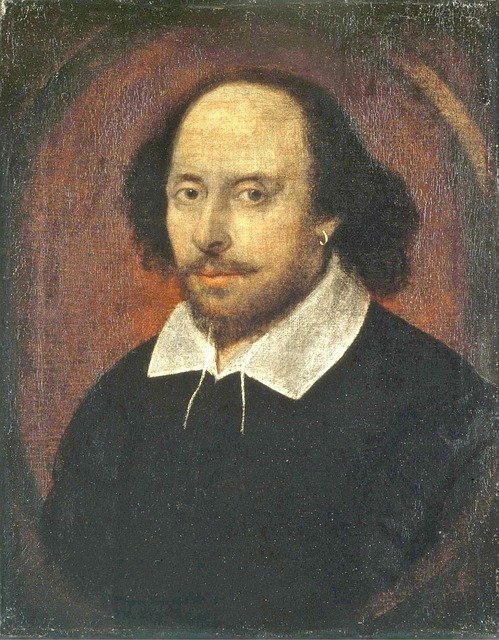A brief overview of the life of two of England’s most famous monarchs, King Henry VIII (8th) and Elizabeth I. In a bonus section we cover in more detail the second part of the Tudor period.
Transcript
DownloadMark
Hello, and welcome to the podcast English for Life in the UK. I'm joined today by Sheena and John. So Sheena - well, Happy New Year first of all, because this is the start of 2021. How are you?
Sheena
Fine, thank you. Happy New Year, to you and everyone else. Yes, a good start to the year with lots of snow today, as well, so that's quite wintery and exciting.
Mark
Great. Thanks, Sheena - and also, John - how are you, John?
John
I'm very well, Mark. Hello, Mark. Hello, Sheena - and a Happy New Year.
Mark
Today, we're going to talk about a period of British history where we had kings and queens who were part of the Tudor family. This went on for about 120 years and there were a number of monarchs - that's kings and queens - but there were two really big, important and famous ones - that is Henry VIII [the eighth] and Elizabeth I [the first].
So we are just going to say a little bit about each one of those. And Sheena is going to tell us a little bit about Henry VIII.
Sheena
Thank you. A very big subject and I think everyone in England, and every English school child, learns about Henry VIII. He was a very, very famous king; he was very famous for two reasons - the first reason was because he had six wives and another reason was because he started the Church of England.
Henry's first wife - and he was married to her for a long time - was Catherine of Aragon. She was Spanish, and the important thing for Henry and Catherine was to have a son who would reign after Henry. But sadly, Catherine had several problems with having a child - several of the children were dead, when they were born. One child - they were very happy - because one child, who they named Henry, was born healthy and then, very sadly, died 7 weeks later. So the only child they had successfully together, was Mary, but Henry still wanted a son. Catherine was getting older and was unable to have the son that Henry wanted. So Henry wanted to end the marriage to Catherine and to do that, he needed to have the permission of the Pope - the Catholic Pope. At this time, England was a Catholic country - the Pope would not give Henry a divorce from his wife - so Henry, through the Act of Supremacy, in 1533, declared himself to be head of the Church in England. And this was the beginning of the Protestant Church in England. This meant that Henry could marry his second wife - who many people know about - and his second wife was Anne Boleyn. She was French, but even this marriage - it was very short - and she didn't manage to produce a son for Henry, but she did manage to produce a daughter: that daughter was Elizabeth and we will hear about Elizabeth later.
(4 minutes: 10 seconds)
Henry married again, to Jane Seymour. Jane Seymour gave Henry a son, but sadly, Jane herself died, less than two weeks after having her son. This son was called Edward - again, Edward was very important. After this, Henry married three more times - once to Anne of Cleves which didn't work at all well and didn't last very long. He next married Catherine Howard - again, she was very young - much younger than Henry, and again that marriage did not last and she was executed. And finally, his last wife, Catherine Parr was still alive when Henry died, so she outlived Henry. They had no children but she actually managed to get Henry to be reconciled - so, to have a good relationship again - with his two daughters, Elizabeth and Mary.
Mark
Thank you Sheena for summarising that very colourful period of English history, with Henry VIII and his six wives, and the breaking away from the Catholic Church in Rome, in what is often called the Reformation.
So after Henry died, there were his three children. Edward became king, but only for 6 years, before dying young, at the age of 15. And then, Mary - she was only queen for 5 years, before dying, but importantly she was a Catholic and in that time she married King Philip of Spain, who we will hear more about. Finally, then, Elizabeth becomes Queen.
And John is now going to tell us a bit about Elizabeth.
John
Queen Elizabeth was the daughter of Anne Boleyn and Henry VIII. And she came to the throne in 1558 and ruled until 1603. Queen Elizabeth like her father was a Protestant. She re-established the Church of England, after Mary Tudor had tried to reimpose Catholicism, as the official Church of England. Now, she was a Protestant, but she was quite pragmatic, in that she was quite happy for, initially, for Catholics to continue worshiping, as long as Protestantism was the official Church of England.
She famously said to a Bishop at the time that she did not 'want to put windows into men's souls', which meant that she didn't really concern herself too much with what men truly believed in their own space, in their own homes, in their own churches.
As I said, she succeeded in finding a balance between the views of Catholics and the Protestants within her realm . In doing so, she avoided any serious religious conflict within England, which was very important at the time. She became one of the most popular monarchs in English history, and a very big part of this is due to the events that occurred in 1588, when the English defeated the Spanish Armada - which was a large fleet of ships sent by King Philip II [the second] of Spain, which was - the intention was, of conquering England, putting Philip II on the English throne and reimposing Catholicism on to England. And this has kind of stood out in English history, as an example of England .... at the time, England was quite a small power.
Spain was one of the most powerful countries in the world: they ruled South America, much of North Africa, the Mediterranean, the Philippines - obviously, the name coming from King Phillip. So they had a world empire. We were a small, not insignificant but a smaller and much less powerful nation, at the time.
Queen Elizabeth I historically now is seen as standing up for England, or Protestant England, for our place in the world. And one of the other very important things during the Elizabethan period, as we refer to it, historically, was that our Navy grew in power and we moved over to the Caribbean, to the east coast of North America, and started to settle places there, that eventually moved on to become the colonies of North America, and the beginnings of a world empire for Britain.
Another important person that we have to mention is a lady called Mary, Queen of Scots. She was the - as her name would suggest - the Queen of Scotland - she was a cousin of Queen Elizabeth I; she was from the Stuart line , as opposed to the Tudor line, and she was a Catholic. So there's obviously lots of room for conflict and contention there - England against Scotland, Catholics against Protestants, all the rest. Now, Mary, Queen of Scots had a pretty bad time: her husband was murdered, she was blamed for the murder. She called on Elizabeth I to give her support. Eventually, she fled to England; she was kind of either under the protection, but also the imprisonment - she was imprisoned by Queen Elizabeth I - who was worried that being a Catholic, Mary, Queen of Scots was a threat to her throne.
Now eventually, in 1587, some of Queen Elizabeth's agents discovered that Mary, Queen of Scots was actually plotting to murder Queen Elizabeth with a group of Catholics, and take her throne herself, so she was executed by Queen Elizabeth. This was in 1587, the year before the Spanish Armada - that's seen as one of the reasons for the Spanish Armada coming to attack England. Eventually, however, as we know, Queen Elizabeth never married. She was known as "The Virgin Queen", of course. She never took a husband, therefore, she could never give birth to a male heir. Mary, Queen of Scots, had married a man called Darnley, and she gave birth to a son who became, during Mary, Queen of Scots' imprisonment, became James VI [the sixth], King of Scotland and, on the death of Queen Elizabeth I in 1603, he succeeded to the throne of England as well, and became King James I [the first] of England.
So, after the long and quite successful reign of Elizabeth I, led to what we know as the "Union of the Crowns", so King James VI of Scotland became King James I of England, and unified the two kingdoms of England and Scotland. Again, something very, very, important: the development of the United Kingdom, going forward.
Mark
Thank you, John, for summarising a long and complicated part of British history: the Elizabethan period. And one thing we should add is that this was also a time when science and the arts flourished in England; for example, this is the period when William Shakespeare started to write: probably the most famous playwright in the world, even today.
(13:09)
Mark
For those who are particularly interested in this period of British history, there is a "bonus section" to this episode, in which John talks in more detail, about the period between the end of Henry VIII and the period up to James I. It is a longer and more complex section, so we've added it at the end of this episode for those of you who are interested and can manage at a more advanced level. In the meantime, here is our usual, short Language Support section.
(14:06)
Language Support
Mark
This is the part of the podcast where I choose a few words and phrases from this episode and explain them.
When Sheena was talking, she referred to the reign of Henry VIII. A reign in this sense is the period of time that a king or queen is in place. It is of course the same sounding word as "rain" in the weather, but the two are spelt differently: the reign of a king or queen is spelt: R _ E _ I _ G _ N .
The rain of the weather is spelt: R _ A _ I_ N
We also used the phrase that the religion was re-established. Now, to "establish" something, is to put it in place - so to re-establish something, is to put back in place - to put in place, again.
John referred to Elizabeth's attitude towards Catholics as being pragmatic; to be pragmatic, is to deal with things in a sensible and realistic way; a practical way of dealing with a problem.
John said that, in the Elizabethan time, Britain's place in the world was "not insignificant". Now if something is insignificant, it's not important. So, if something is not insignificant, then it is important but you would use this to show that something is, perhaps, not as important as something else. So: the power of Spain was much greater than the power of Britain at the time, but our power was not insignificant - so we did have some power and place, in the world.
Finally - I said that "science and the arts had flourished during Elizabethan times". To flourish means to develop rapidly and successfully. It is often used in terms of plants and flowers that flourish, that grow and develop. But, in this case, we're saying that the artistic and scientific life of the country flourished - it grew and developed rapidly.
(Music) (17:41)
Bonus Section
Mark
We have added here a longer version of John's contribution to this episode. He picks things up from the end of the Henry VIII period and talks in more detail about the other Kings and Queens, and about Elizabeth, and what happened later. For those of you at a more advanced level and interested in this period, we thought you would enjoy this additional section.
John
It's interesting to think about the Reformation, in terms of how it occurred in England. In a lot of Europe, it were very much a popular movement - so, in places like Bohemia, the modern day Czech Republic, in Switzerland, in parts of Germany, it were a popular movement, if you like. In England it were more of a top-down (if you like) affair.
As Sheena pointed out, Henry was a sincere Catholic in his youth. His move away from Rome, the Act of Supremacy, and these things, installing himself as head of the Church of England, was more a political thing, more for him - in order to ensure his succession. His divorces, the things that himself and his partner-in-crime, Thomas Cromwell, went on to do: the dissolution of the monasteries - it were more to do with him obtaining power from the Church. So when they broke down the monasteries, he took the wealth and the land and the power that had been the mainstay of the Catholic Church and took it into the power of the king.
So it were a pragmatic thing, really, in terms of Henry moving away from Rome. It was for political reasons, really. Yeah. Obviously this did not necessarily play well with some of the aristocracy and with some of the wider populace, who still felt an allegiance to the Catholic Church. And this is one of the things that we'll go on to look at, with the succession - the various monarchs who followed on from Henry VIII. They kind of zig-zagged between Protestant Leaders, Catholic Leaders, and this, going forward into things we'll talk about, moving up to the Civil War; it were a constant source of tension and upset in British politics for another couple of hundred years really. Yeah.
Mark
Where do we get to next? And how do we get to Elizabeth becoming Queen?
John
Well, we have a little bit of to-ing and fro-ing, between Henry VIII dying and Queen Elizabeth - the other main Tudor Monarch who we're going to talk about. So, as Sheena said and pointed out, we have the succession of Edward VI, the son of Henry VIII, who was son of Henry VIII and Jane Seymour. He was a Protestant, now things there, looked fairly clear, for a Protestant succession. Unfortunately, as was often the case, in the time, he died very young. He died at the age of 15, after being king - he'd already been King for 6 years when he was 15. So quite an achievement, I guess, but unfortunately passed away, at 15 years of age.
He was succeeded, very briefly, by a woman called Lady Jane Grey, who was known as the "9-day Queen". She was the great granddaughter of Henry VII [the seventh], the first Tudor monarch, that was her claim to the succession.
She was very swiftly dispatched by Mary Tudor, or Mary I, who was the daughter of Catherine of Aragon, who Sheena mentioned, and Henry VIII. Mary was a Catholic - she was very fiercely Catholic; she was very keen to return England to Catholicism and in doing so, she was very cruel, and persecuted Protestants and, in turn, earned the name "Bloody Mary". She again only ruled from 1553 to 1558 a short reign, during which time she was married to King Philip II of Spain. Another Catholic - a powerful Catholic - who we'll return to later: he will re-emerge in our story in a wee while .
She was succeeded by Elizabeth I who was the daughter of Anne Boleyn and Henry VIII. Now Elizabeth was a Protestant. She reigned for a very long time - she reigned from 1558 to 1603 - what we now refer to as the Elizabethan age. As I say, she was a Protestant, but again - she was, I guess, in some ways like her father, quite pragmatic.
(23:11)
She wasn't fanatical about religion - she was a staunch Protestant but she's famously quoted as saying "I will not look into men's souls - I will not put windows into men's souls". By which, she meant, as long as people toed the line , as long as England was Protestant, and independent from Rome, she wouldn't worry too much if people still in some ways, kind of kept their old kind of Catholic ways in terms of religion. She brought a long period of peace, in England, really after all the previous civil wars - it was after the Wars of the Roses and things like that.
She was commonly regarded historically as a a very successful monarch, she did a great deal of good for the country, as many people saw it. Now, one of the things about Elizabeth - she was known as the "Virgin Queen" so all the things that we looked at before, about Henry VIII, his six wives and his constant attempts to, obviously, provide a male successor to carry on from him, she never married. She had various suitors as they called it. She had aristocrats and men in her Court who people had encouraged her to marry, but I think some of the historians look at it, to, kind of, if you look back at her family life and how her Dad had tret [treated] her Mum and various step-mums, that might have had some influence on her: she was a very, very, independent woman and she was determined to rule alone.
Now, obviously, this put forward problems in terms of succession, people around her in her Court and in the wider political sphere, were very keen obviously that they would have another Protestant monarch, to follow on from Elizabeth, but she never married so that was always going to present a problem at the end of her reign. As I said, she found a balance between Catholics and Protestants, within her realm, but one of the problems ... one of the things that was ever present and the people of England, at the time - were worried about were that ....they were standing - not alone - but kind of quite isolated, as a Protestant country.
Now at the time, leading up to this, England and Spain, had been, whilst England had been Catholic, England and Spain had been allies for quite a very long time. Part of that - due to the reason that we had a common enemy in the French. So "my enemy's enemy is my friend". Obviously, Henry VIII had married Catherine of Aragon, originally, who was a Spanish princess, so there were this historic link, between England and Spain. This kind of ruptured, with the emergence of England as a Protestant nation, because Spain, obviously, was still Catholic. A very important, another thing very important at the time, Spain was the global super-power at the time and England was a minor player, so as things went on - we have the friction as well between England and Scotland, because we had another very famous person at the time - Mary, Queen of Scots. Mary, Queen of Scots, being a Catholic, and Queen Elizabeth I being a Protestant.
Now a lot of the Catholics in England looked to Mary, Queen of Scots to potentially take over from Queen Elizabeth I and to reimpose a Catholic regime . Erm ... she eventually gave birth to an heir, that heir was King James VI of Scotland, who eventually became King James I of England, but in the meantime, Mary fled to England, supposedly under the protection of Queen Elizabeth I, who was her cousin, eventually after nearly two decades of imprisonment, she was discovered to be plotting against Queen Elizabeth and, in 1587 dispatched - beheaded - on the orders of her cousin, Queen Elizabeth. Now this was part of ... kind of tied in with ....what we spoke about before, about the Spanish empire.
King Philip II of Spain now saw his opportunity to reimpose Catholicism, to take over from Queen Elizabeth I, [John accidentally says 'second' here] - and in 1588, a year after the execution of Mary, Queen of Scots, he launched something very famous in English history, known as the Spanish Armada. Now - "armada" is basically the Spanish word for fleet or Navy, and in May 1588, they set forth with, I think, 150 ships from Lisbon, with the express intent of effectively, invading England, deposing Queen Elizabeth I and imposing Philip II as the King of England.
So, a lot of "ha ha " - our growing Navy and our ships were involved in effectively, stealing the wealth from the Spanish, the Spanish colonies in the Caribbean and what is now South America - this was going on as well - so there were religious elements, there were also the elements of state, power and fighting against each other, at that time. Although we were a small power, we had an advanced Navy - we had better cannons, weaponry than the Spanish ships. So, under Francis Drake, there were famous battles along the south coast of England, we were able to defeat the Armada.
As we've seen later on in history whether it was with Napoleon, or with Hitler, in 1940 , we were basically saved by the fact that we were an island and that we had a strong Navy.
One of the other things it did, it really imbued the English with a kind of sense of destiny, if you like, and the idea that it could become a great naval power. And this is one of the things, you know, we talked about Boudicca before; we look at people like Churchill - he stands in English history as somebody who stood up for our rights as an independent country, against, you know, all these great powers in Europe. So a very, very interesting and important period in our history.
Mark
It was also a time when the cultural life of the country really blossomed. So, for example Shakespeare, started writing at the time of Elizabeth I. Probably one of the most famous playwrights in the world and still performed today.
Poetry, art - they flourished under Queen Elizabeth and also as a result as you were saying, John, of the success against the Spanish, and the growth of the British Navy - we went out and started to explore elsewhere in the world as well, so in some senses that is the beginning of what eventually becomes the British Empire, from that kind of period.
So, how does that ...how does the Tudor period finish, John?
(30:50)
John
It's very important that you point those things out, Mark - and ... part of the sort of flowering of ideas and science and literature is often put down to the Reformation, in that, you know, when people are Protestant, there is an onus and an idea put on individual understandings of the gospels and religion and so in that sense, people need to be literate, people question things more, that kind of leads to an increase in scientific exploration and literature, and a lot if these things, as you rightly said, did flourish during the Elizabethan period and will lead us on to things we are going to look at in the next podcast.
The end of the Tudor period, came with the death of Queen Elizabeth, who was succeeded by the son of Mary, Queen of Scots, so in a way, she kind of got the last laugh , in a way - if you like - so her son succeeded Queen Elizabeth. But this was king James VI of Scotland, who also became in succeeding Queen Elizabeth, King James I of England, in 1603.
So this is something that is referred to as the Union of the Crowns, OK? so we didn't see the political ... the full act of the political union until 1707. But we did see the Union of the Crowns, so from 1603 onwards, effectively England, Scotland and Wales and Ireland, were effectively the same country and you know they had fancies that we've seen .... what you were talking about with the colonisation of America, the growth of our Navy, this is the beginning of Great Britain as a world power.
(Music) (32:56)
Mark
That's it for this week. You can find the transcript - that's the written version of this episode - on our website: www.staugustinescentrehalifax.org.uk
And that's where you can also find links to all the other episodes, and the transcripts, so you can listen and read along at the same time. That's also where you can find out how to donate, to help our work. We are a charity, supporting particularly, refugees, asylum seekers and migrants but also, all those in need in our local area and we would welcome your support, if you felt able to give it. If you follow on the website, the links to "Get Involved" and "Donate".
We also have an email address - that's englishforlifeintheUK@gmail.com
And we would love to hear from you - your thoughts on our podcast and ideas for the future.
We also have a Twitter account : @EsolSaint and there is additional material on that site.
I'll spell out all those addresses: So, the website: w-w-w-.-s-t-a-u-g-u-s-t-i-n-e-s-c-e-n-t-r-e-h-a-l-i-f-a-x.org.uk So that's the website.
The email is: englishforlifeintheUK@gmail.com And that's "English for" spelt: f-o-r. And finally, the Twitter account: is : @ [at] [capital E] E-s-o-l- [capital S] -S-a-I-n-t
All Podcast Episodes
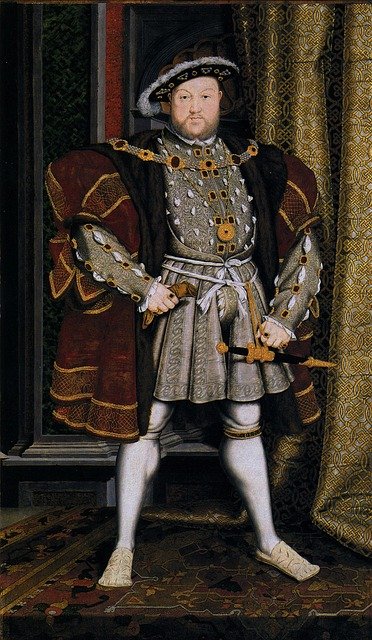
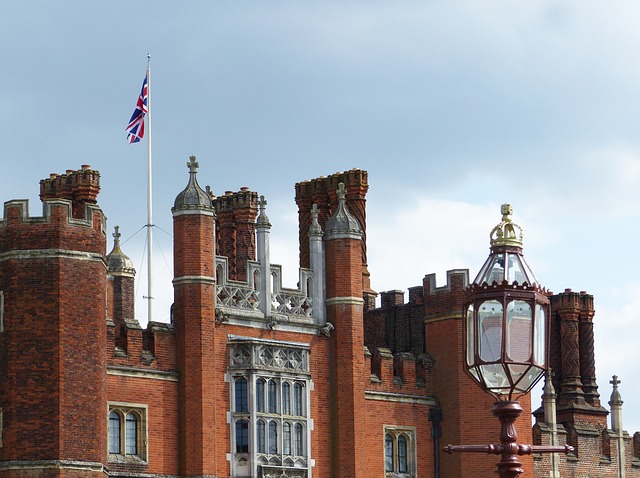

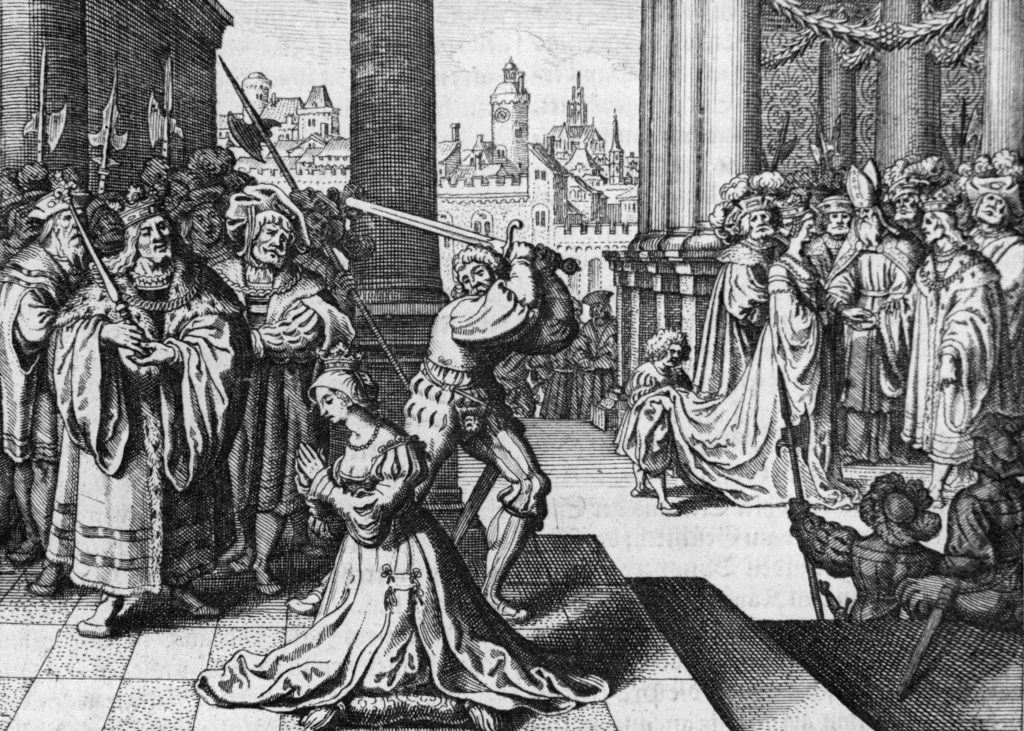

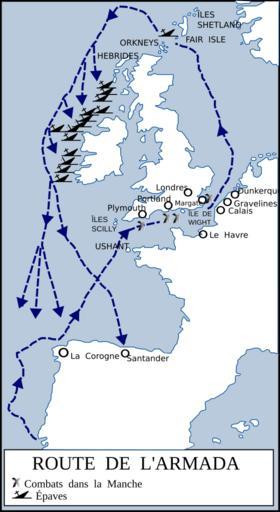
Route of the Spanish Armada
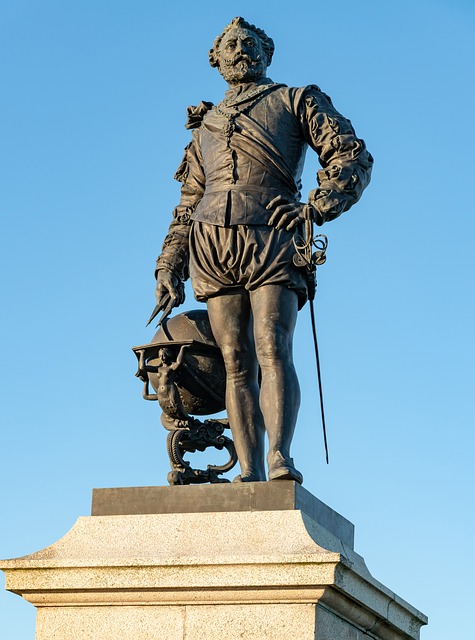

Exploration of the Americas during Elizabeth I's reign.
